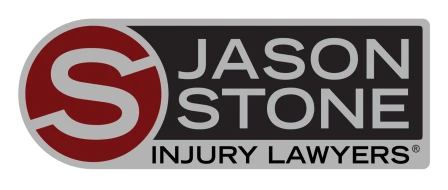Noise-induced hearing loss is one of the most common work-related injuries, but it is also preventable. Workers who suffer from constant exposure to loud noises in the workplace can experience permanent damage to their hearing.
The Occupational Safety and Health Administration (OSHA) estimates that over 22 million Americans are exposed to dangerous noise levels at work every day. While noise exposure is a widespread concern, 34% of workers who report noise exposure don’t wear hearing protection.
Employers must ensure workers wear the proper personal protective equipment (PPE) when at risk of exposure to dangerous noise levels. By helping employees protect their ears, employers can avoid costly lawsuits because of hearing loss and increase employee safety and wellbeing.
How Work-Related Hearing Loss Happens
In some work environments, workers may be exposed to loud noises that could cause inner ear damage. Regular exposure of eight hours or more to noise at 85 decibels (dB) can damage your hearing, according to the National Institute for Occupational Safety and Health (NIOSH). Workers in these industries need to wear suitable NIOSH-approved ear protection when working in a high-decibel environment.
Construction
Construction workers are exposed to dangerously high levels of noise during work hours. The sound coming from a jackhammer hitting asphalt is so loud that it may expose other nearby workers and passers-by to 120-130 dB, well above the acceptable safety limit of 85 dB.
Manufacturing
Almost 46% of all manufacturing workers report being exposed to hazardous noise. When noise levels are exceptionally high in manufacturing facilities surrounded by heavy machinery and trucks, hearing protection is required at all times to reduce damage to workers’ ears.
Trucking
The excessive noise levels produced by trucks and other motor vehicles on the roads can lead to hearing loss among truck drivers. Noise from a motor vehicle’s power transfer system, tires, and increased weight on a heavy car contribute to excessive noise on highways.
When to Get Medical Care for Hearing Loss
Medical attention is recommended for hearing loss. The doctor may refer to an audiologist who specializes in diagnosing and treating hearing impairments to test their hearing abilities. Audiologists usually collaborate with ear, nose, and throat specialists (ENTs) to diagnose and treat your hearing issues.
During a test conducted by an audiologist, they will go through tests over time to identify hearing impairment levels and speech interpretation abilities so that the audiologist can measure the percentage and frequency of their hearing loss. Workers who have hearing loss might be eligible for workers’ compensation benefits if exposed to loud noises over an extended period or in a single event such as a loud explosion at a construction site.
What Are the Compensation Benefits for Hearing Loss in Massachusetts
All employers in Massachusetts must carry workers’ compensation insurance for their employees, regardless of how many people work for the organization. This coverage extends to employers if they are also an employee of the company. Massachusetts employees are entitled to the following benefits:
- Workers’ compensation is equal to 60% of their average weekly wage before their injury. Even if a worker is partially disabled because of a workplace injury and can no longer work at the same job as before, they can receive partial disability workers’ compensation benefits.
- One-time lump sums related to hearing loss:
- Benefits for hearing loss to one ear are calculated by multiplying the State Average Weekly Wage (SAWW) by 29.
- Benefits for hearing loss in both ears are calculated by multiplying the SAWW by 77.
How to Protect Workers in the Workplace
Employers can suffer many consequences when they do not protect their workers in noisy environments. They could lose workers because of an unsafe workplace exposed to hazardous noise levels or face OSHA inspections if employees report safety violations.
To create a safer workplace, OSHA recommends a hearing conservation program for workplaces where workers are exposed to noises greater than 85 dB for eight hours. It is also recommended for construction sites if noise levels reach 90 dB. OSHA’s program includes these safety elements:
- Selection of ear protection based on individual fit, industry, and manufacturer quality.
- Notification of high levels of noise to workers from noise monitoring.
- There are regular hearing tests for workers and hearing protection procedures for workers who show hearing loss after their hearing tests.
- Training for workers on how to use their ear protection and the hazards from excessive noises.
Get a Free Consultation With a Workplace Injury Attorney
While employers need to provide a safe work environment, workers must also be aware of their legal rights to protect themselves if they suffer any work-related injuries. If you are a worker who has suffered from hearing loss related to your workplace, you may be entitled to workers’ compensation benefits under Massachusetts law.
During your free consultation, one of our Boston workplace injury lawyers can review the details of your hearing loss case and talk about your options to pursue workers’ compensation benefits. Contact us today to arrange your free initial consultation.
Not Trusting What You’re Being Told?
Better Phone Stone
800-577-5188
 START MY NO OBLIGATION CONSULTATION
START MY NO OBLIGATION CONSULTATION











